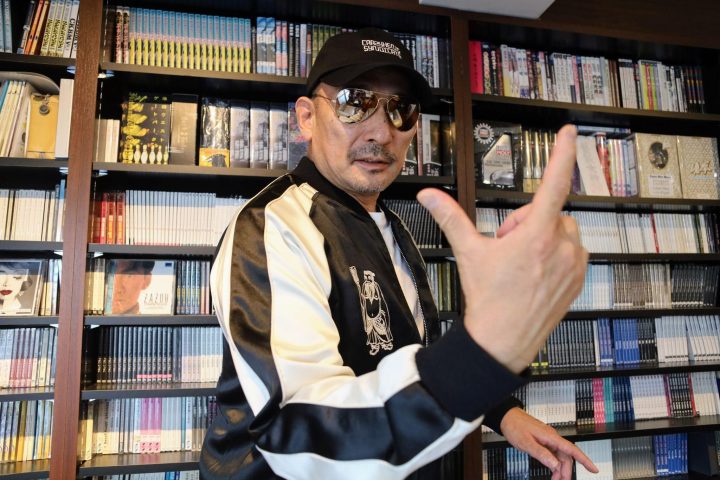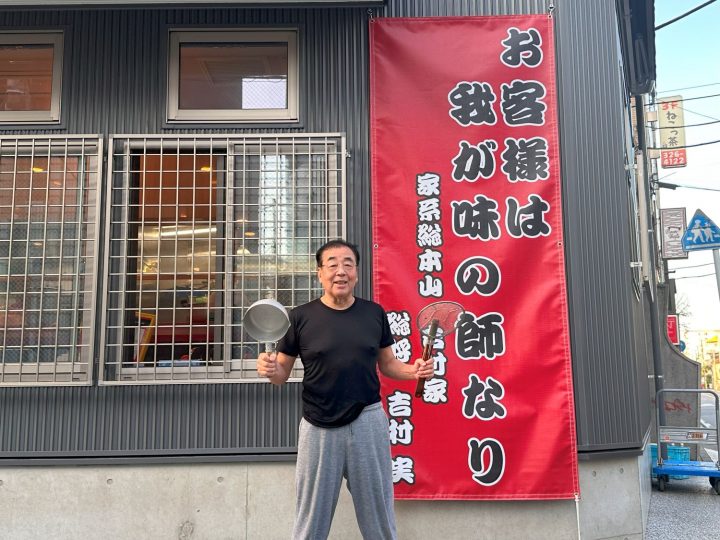[Serial] I Want to Ride Inamura Jane (2) - In Search of Keisuke Kuwata's "Summer" -
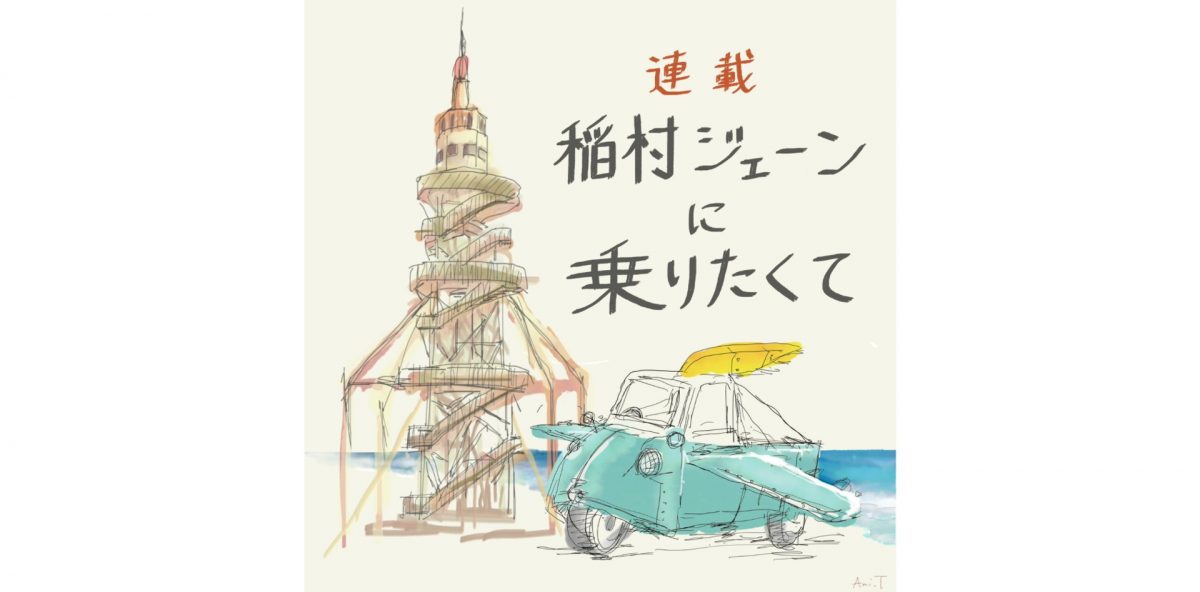
This series celebrates that and is also a challenge to pursue "the original landscape of Shonan as seen by Kuwata."
What is Shonan? What is summer? Please enjoy with a Coke in hand. (Author)
Chigasaki after the rainy season.
It was 4:30 a.m., well past dawn (the time when it was still dark), the time in the Kamakura period when people were closest to the gods and Buddhas.
As if to say, "We've been waiting for this!", the cicadas begin chirping all at once, ready to live out their days.
Many scholars have attempted to answer the question "Where is Shonan?" but have failed miserably.
However, as a scholar at the Shonan Cultural Research Laboratory, I cannot avoid this issue.
That's right, he said that in this film he wanted to "portray the true Shonan that he has in his heart."
It's hot again today at Chigasaki City Brandon University.
①There was no such thing as "Shonan"...
Professor: In Eboshi's summer, there's nothing there, it's summer, bang!
Ami: Teacher! Are you okay?
Oz: Teacher! It's spring in Erimo!!
Professor: Good morning, sorry, I had a big realization that kept me up.
Oz: Did you notice? Professor, you don't know Jane's true identity...
Professor: No, that's not true. You were born in Chigasaki and Hiratsuka, right?
Ami: Yes, I crossed the Sagami River again today!
Professor: So, do you know which parts of the movie were actually filmed in the Shonan area, such as Chigasaki and Kamakura?
Oz: Yes, the place where Eboshi Rock is in the picture, the Enoshima Electric Railway, Inamuragasaki...
Ami: Pacific Park also made an appearance.
Professor: Apparently, the scene in the Western-style mansion where the Chinese antique dealer lives was actually shot in a Western-style mansion that actually existed in Kamakura. In fact, most of the filming was done on sets in Izu or in a studio.
Oz: What?! The movie is set in Shonan, so why bother...
Professor: In other words, I think that means that even at that time, the Shonan area no longer had the environment to recreate the events of 1965, 25 years earlier.
[Research Note 1]
Kuwata Keisuke said, "Today's Shonan has a row of stylish buildings, like Aoyama Street with a view of the sea, but in my mind it's a simple, lonely seascape. There's a tuberculosis sanatorium near my house... It's completely changed. This is true not only of Shonan, but of the whole country; local identity has disappeared, and something is heading in an irreversible direction" (With, October 1990).
Kuwata's comments on Shonan during this period are refreshing and inspire self-reflection. For example, the transformation into "Aoyama Street with a View of the Sea" and "Killer Street with a View of the Sea" mentioned above, the "blue sky of California" that Tokyoites imagine (fm STATION, 1989, No. 6), and "Hayama is fine because it still has a certain charm, but Chigasaki has become a mini-Tokyo" (AERA, September 11, 1990).
He denies this sense of "Shonan," saying that the Shonan he has in his mind is not so superficial and pretty. He says he has an attachment to the Shonan that was of lower quality, less refreshing, and more exclusive, and that there was a strange sadness to it.
However, the waves of impermanence were also washing over Shonan and Chigasaki. The real reason was the "longing for Tokyo" felt by local cities and rural areas. "I think it's because people long for Tokyo. But if they're aiming to turn Aoyama Street into an area with a view of the sea, they won't be able to create something new unless they throw away everything that was good, like the station's appearance and the roads. What's thrown away will never come back. So when people talk about Shonan, it makes them feel like Chigasaki and Urawa have all become the same" (Weekly Bunshun, September 6, 1990). The film depicts a scene in which a Tokyo restaurant company tries to buy Restaurant Venus.
Sanatorium Nankoin opened in 1899, and its hospitalization of cultural figures such as Kunikida Doppo and Ishikawa Takuboku, as well as upper-class patients, helped raise Chigasaki's profile. The year before its opening, Chigasaki Station on the Tokaido Main Line was established, and Chigasaki developed as a seaside resort area.
By the time Kuwata was born in 1956, the hospital had already been turned into a US military camp in Japan, but it was deconsecrated. Even so, the atmosphere of the area around Nanko, where Kuwata grew up, likely still lingered. However, in 1985, a station building opened, and chain restaurants like Red Lobster and First Kitchen expanded into the fishing town. At the time of filming, Chigasaki was no longer the pristine landscape that Kuwata knew.
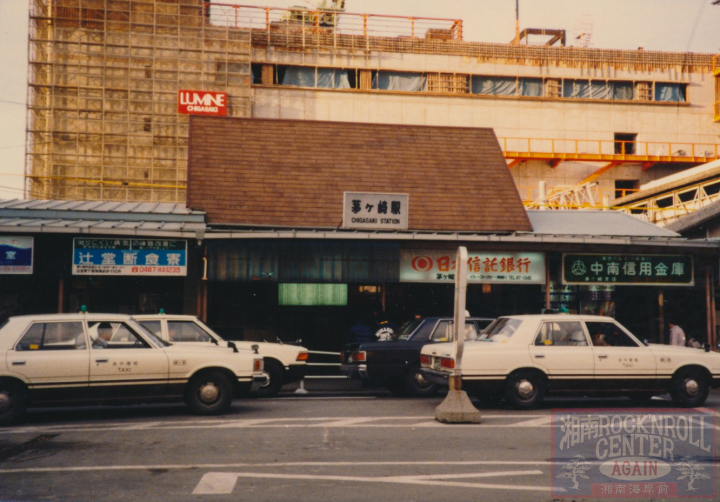
Professor: To begin with, people who have lived in the Shonan area all their lives don't use the word "Shonan" very often. What would you say if someone asked you where you're from?
Oz: Chigasaki!
Ami: Hiratsuka!!
Professor: Yes, but for people who are not in the Kanto region, I tell them it's Shonan in Kanagawa Prefecture! (laughs)
Both: That's true...
Professor: That's the interesting thing about humans. Before entering university, Kuwata hadn't even heard the term "Shonan Boy," and he felt it was wrong to put himself in the same lineage as Yujiro Ishihara and Yuzo Kayama. Of course, he was being humble and saying it was an honor, but I think he also felt there was a danger in categorizing people into groups like the "Shonan Sound." It would take away their individuality.
Ami: There's Yujiro's Shonan, Wakadaisho's Shonan, and Kuwata's Shonan, and each one is great.
Oz: There's no need to conform to the easily packaged image of "Shonan"...
Professor: Kuwata-san also said that he doesn't dislike the "It's summer! It's the sea!" slogan (laughs), but Chigasaki is fine as it is. I agree, and when I see all kinds of merchandise with pictures of blue skies, sea, white sand, and palm trees, I can't help but think that Chigasaki is just an illusion. This is a problem that still exists today, and I can't help but wonder if "Shonan" doesn't actually exist anymore.
Ami: So Kuwata wanted to portray the "real Shonan" in the film.
Professor: That's a combination of his main job as a musician. If the movie "When She Changes Into a Swimsuit," which we talked about last time, is about "front Shonan," then he has declared that he will be doing "back Shonan." It's a confrontation with the term "Shonan sound" that has been attached to Southern All Stars' activities. As a local, he is the antithesis, and in response to that, he wants to portray "truth" in the film.
Oz: "Midsummer Fruit," shortened to "Truth"!
Cicada: Meen meen meen...
②Boredom and coincidence
[Research Note 2]
The following catchphrase appears on the film's pamphlets and posters:
"There was always something missing. Young people in every era live boring lives."
Keisuke Kuwata described the youth of young people as "boring." Of course, this is not just a question about young people, but also about the way of life of all modern generations.
Looking back on the path he has taken, he emphasizes the importance of purity, such as believing in dreams and coincidences, saying, "We didn't have a great youth either. But our music, for example, has become what it is today through a series of coincidences, right? It was a foolish purity, like we were just walking down the street and picked up a flyer for a contest and did it. So I want people to believe in things like that" (GORO, February 23, 1989).
There is an 18-year age difference between Yuzo Kayama and Keisuke Kuwata. "I understand that everyone admires the 'Shonan' that Kayama created, but in our time, the things we admired were so vague that there was nothing left" (Number, September 5, 1990), showing the difference in how people of different generations expressed 'Shonan'. This was particularly evident during Kayama's youth and Kuwata's.
I'm not the Indian who discovered zero (0), but there is "nothing," yet there is "nothing." Thrown into this world of "nothing" ("thrownness," Heidegger, Kuki Shuzo), I have no choice but to live in possibility as this present existence. We are grateful that we exist despite the possibility that we might not exist. Perhaps this irreplaceable nature is what leads to a belief in coincidence.
When asked how he would sum up the film "Inamura Jane" in one sentence, Kuwata answered matter-of-factly, "Yes, Shonan has changed, after all. It's a film that shows how people used to be poor, but there is truth in it" ("Bisho" September 15, 1990).

(View of Enoshima from the Pacific Hotel)
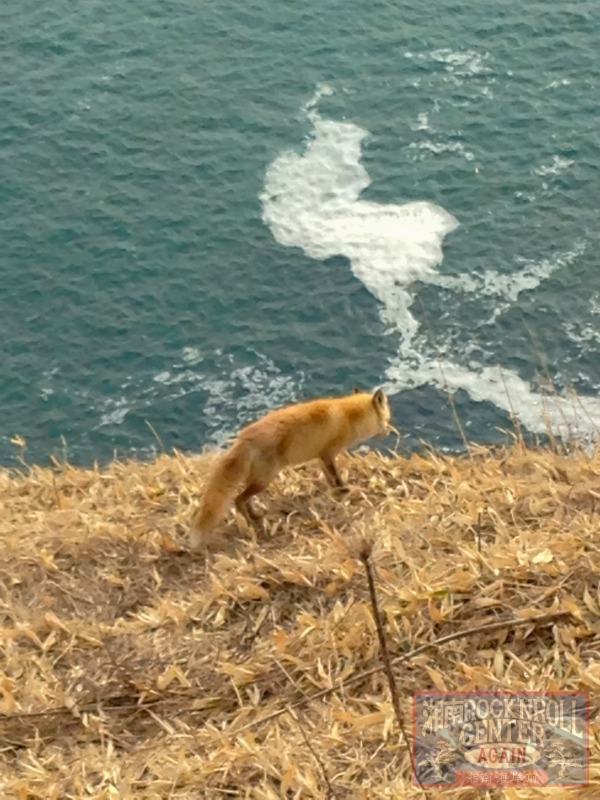
(Shonan? No, the foxes of Cape Erimo)
Professor: Kuwata said that he wanted to portray "youth with nothing" in this film.
Oz: Oh, so was the teacher singing "Erimo Misaki" just now?
Professor: That's right! The music was composed by Takuro Yoshida and the lyrics by Osami Okamoto. In fact, when this song was first released, local people were angry, saying, "What do you mean, there's nothing here?" Of course, they made amends after the song became a hit and contributed to raising awareness (laughs).
Ami: Haha (laughs) But it's difficult, isn't it? When travel brochures say "the luxury of doing nothing," I think it has a positive meaning, and the Shonan area is often described as a "slow life."
Professor: It's the wabi-sabi that is uniquely Japanese. If it were used to mean that people from Shonan live a relaxed and leisurely life, I'd be angry. Because I'm a busy man (wry smile). But the original meaning of this word is said to have originated from a movement to protect the traditions of Italian villages in opposition to the advance of fast food restaurants, as mentioned earlier.
Oz: So... it can also be interpreted as a direct affirmation of "there is nothing"!
Professor: Yes, think back to your youth in junior high and high school. Were there any big waves?
Oz: Well, now that you mention it...
Ami: It's not that it was boring, but I was vaguely hoping that something would happen someday.
Professor: Someday something fun will happen, someday I'll be happy. But that's turning a blind eye to things like "life" and "existence" in the present. You call this "modern nihilism," and it ignores the "ripples" that are always present in everyday life, or it's not even noticing their existence.
Oz: The main characters in the film say things like "It's just like the Master's big wave" to deny existence or possibility. So "nothingness" is just boring.
Professor: Yes, but I don't think that's the case. It's true that big waves rarely come. But even though it may be extremely flat, there are always ripples, and each wave has a different color and shape.
Ami: Exactly. The same wave will never come again. I don't want to let it go.
Professor: Maybe Surfer Johnny was able to ride Jane (laughs). So I think surfers predict and wait for big waves by looking at weather maps and actually feeling the waves with their bodies at that moment in the ocean.
Oz: It's not like I'm just waiting vaguely, but rather I'm waiting clearly, even though it's just a prediction...
Professor: Yes, it's difficult to put into words, but I think with all my heart and soul as I wait. And when I live like that, sometimes something called "coincidence" occurs that goes beyond my predictions or intentions. Philosophically, it's like "
Ami: Teacher... it's emotional but difficult!
Professor: Yes, I didn't realize it when I was a student either, it was boring (laughs). Now it's August. You guys, catch the waves with your own antenna! When summer is over, submit a report on the waves you experienced this summer!!
Both: Oh, summer vacation homework?
Professor: (I'll do it.)
*This story is fiction.
Written by: Shaku Junsei (Chairman of Shonan Rock 'n' Roll Center AGAIN, Buddhist scholar)
Born in 1989 at a temple in Chigasaki City. Specializes in Japanese Pure Land Buddhism and Japanese intellectual history. To commemorate the 40th anniversary of Southern All Stars, Shinko Music has published a book summarizing the Chigasaki sound culture of artists such as Keisuke Kuwata, Yuzo Kayama, Kunihiko Kase, and Kiyohiko Ozaki, entitled "Our Chigasaki Story: The Genesis of Japanese Pop, Chigasaki Sound History."
He currently serves as the main DJ for "Shonan Rock 'n' Roll Center RADIO" on Kamakura FM every Monday from 10:10pm.
Official website: https://www.srcagain.com/
Editorial assistance:
Ami Tazaki
Daiki Ozawa
(Researcher at Shonan Rock 'n' Roll Center AGAIN)
Photo credit:
Takuya Saito
I Want to Ride on Inamura Jane (1) - In Search of Keisuke Kuwata's "Summer" - here
I Want to Ride Inamura Jane (3) - In Search of Keisuke Kuwata's "Summer" - Click here

